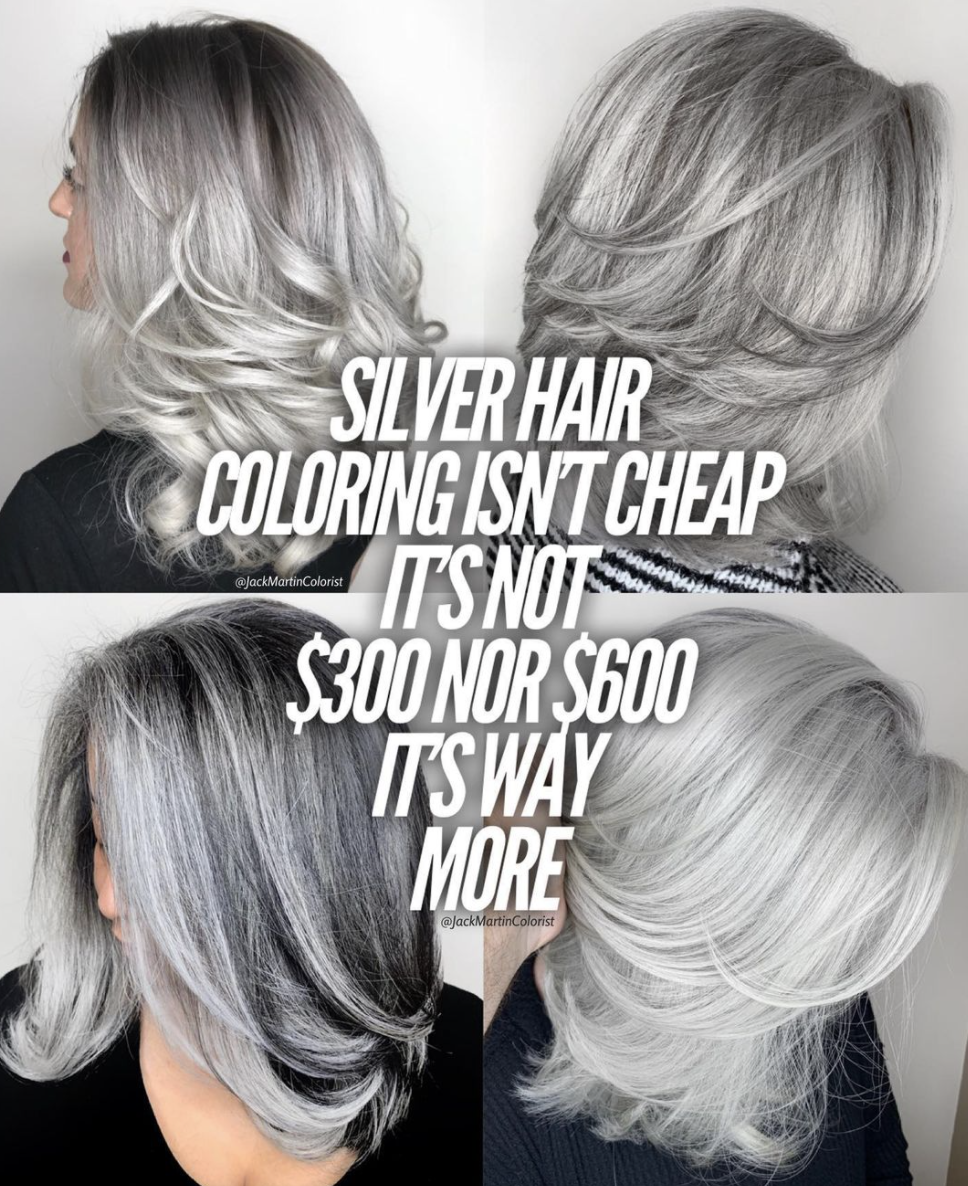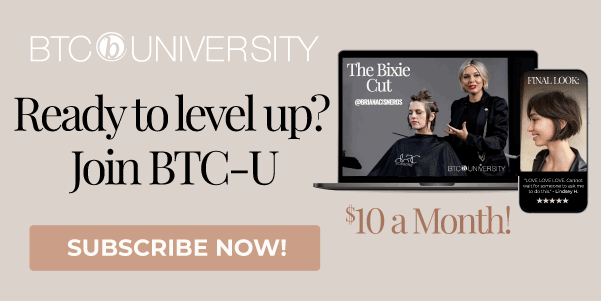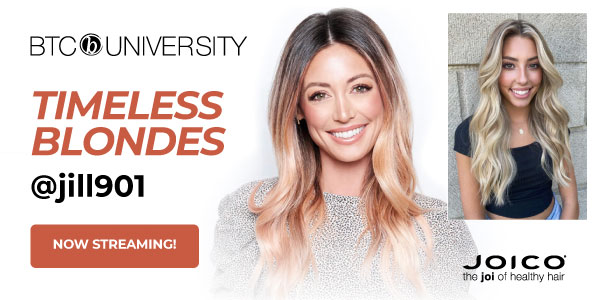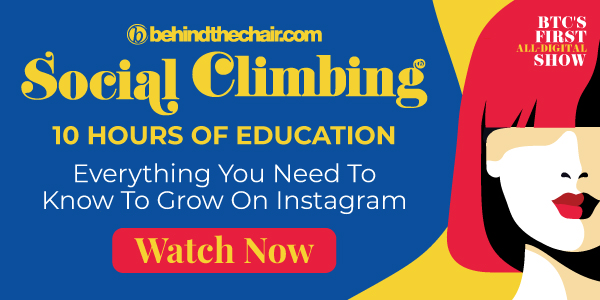HOW TO TRANSITION AND MAINTAIN GRAY HAIR
Are your clients embracing their grays? With jaw-dropping gray transformation work flooding social media like those before-and-afters by Jack Martin (@jackmartincolorist) and a year of fewer salon visits, more clients are thinking about this option. Make sure you’re ready for them with this guide!
First of all, we know gray retouches are your consistent moneymakers. But don’t fear: Transitioning a client from years of color to embracing their gray is a tedious and timely process, and will require regular maintenance to maintain. You’ll gain client loyalty by taking your guest through this process perfectly and seamlessly!
1. The consultation
Transitioning to gray is not only a big change emotionally, but also requires a lot of time, money, and commitment so it is important to make sure your client is ready for all that comes along with this switch.
Brendnetta Ashley (@edgybgirl) has a go-to set of questions she likes to use during her consultation process in order to really get an understanding of how ready her clients are for this big change. Scroll through and feel free to screenshot and save!
1. Would you like to gradually embrace your transition to gray?
2. What is your current hair care routine?
3. What is your commitment to this transition and how frequently are you willing to come into the salon?
The consultation is the perfect time to determine texture, porosity, and daily hair routine to give you an overall snapshot of whether your client is ready and the right candidate for this process.
“I encourage anyone interested in a gray transformation to schedule an in-person consult and a test strand. I ask A LOT of questions. about everything from color history for the past five years all the way to what kind of water they have in their home,” says Dominique DiBenedetto (@hairbydom22).
Performing a test strand will not only let you know if your client’s hair is ready to handle lightener but it will also give you a sense of how realistic your clients goals are for the initial appointment. “This might not be able to be achieved in one session. Set the expectations at the beginning of the process so the clients are fully aware that transitioning to gray is a process,” says Brendnetta.
To make this consult even more successful, I require them to have AT LEAST two months of regrowth so I can get a clear vision of their natural pattern and what’s going on under the color,” says Dominique.
2. The transformation
The process of transitioning from previously colored hair to gray is a labor of love and is not one size fits all. Keep reading for key steps in this major process and tips and tricks to executing them perfectly every time.
Color removal
Starting with previous haircolor? Do this first. “Color remover gets as much artificial pigment out of the hair as possible before I get into lightening with a decolorizer. Sometimes this has to be done more than once and I can usually remove a lot of the color by doing this step first,” explains Dominique.

Dominique used the Rusk Hair Elimin8 Color Corrector twice to remove the previous color from her clients hair. While this extra step adds more time, it can be extremely helpful in creating a clean canvas to deliver the results your client wants.
“I like to start the process by using Malibu C Color Prepare and then I use PRAVANA Artificial Color Extractor for 45 minutes,” says Jack.
Lightening
While it is not always necessary, lightening the hair is usually a big part of the transition process. “During this process every piece of hair goes in a foil,” says Lena Piccini (@lena_piccini).
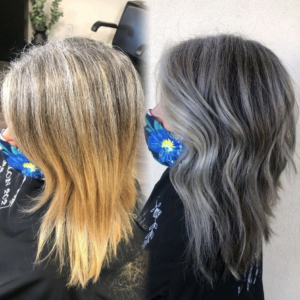
“Being precise and taking baby fine sections are super important and one of the biggest mistakes you can make during this step is rushing the process. Make sure you block out enough time for your client so you can spend time ensuring that you are not cutting any corners,” says Lena, who used Schwarzkopf Professional® BLONDEME Premium 9+ Lightener + 20-volume developer in foils for a clean and even lift on the above transformation.
In the salon, Jack loves to use the K18 Hair system. This starts with the K18 Professional Molecular Repair Hair Mist that he uses to prep, protect and repair the hair during the lightening process and is followed by the K18 Professional Molecular Repair Hair Mask to repair damage and close the cuticle post service. This is available for the client to use at home as well. Press play and turn your sound on below to hear why he loves to treat his clients with this system.
View this post on Instagram
When it comes to lifting color out of the hair, saturation is ESSENTIAL. “The biggest mistake you can make during this process is not saturating the hair properly to get enough lift which will leave you with too much yellow in the hair,” says Sara Cang (@saracangiamila).
Because silver and gray tones require minimal remaining warmth pigment, lifting the hair enough is crucial. ” One of the biggest mistakes you can make in the coloring process is not lifting the hair light enough. If the hair is not lifted enough you will not be able to achieve the tones you want,” says Brendnetta.
Dimension
Every artist we talked to recommended their clients have AT LEAST eight weeks of regrowth. This allows the natural gray pattern to present itself and gives you a sense of how to proceed in order to create a seamless transition. That’s because not all gray hair is the same. Some clients are fully white while others have a salt-and-pepper appearance.
“The most important part of gray blending is figuring out what you are lifting out and where you are depositing your pepper color,” says Lena.
“It really depends on the client’s natural color. Some clients are whiter around the hairline and more dimensional in the back. In this case you might want to break up the solid white by adding some soft lowlights in the front,” says Sara.

“I determine the tone and level of lowlight based on their natural hair color and amount of gray. For example, for a Level 7 with 75% gray, I would choose a Level 7 ash lowlight tone. For a Level 5 with 75% gray I would use a Level 6 or lower ash tone for lowlights to create more depth,” explains Sara.
No lightener required?
Sometimes dimensional toning is all you need in order to transition a client and the key to this process is matching the pattern to your clients natural gray percentage. “This client (below) came to me to blend and match her golden blonde hair with her natural salt and pepper roots. I didn’t use any lightener to achieve this, I just played with colors to match her root color,” explains Jack.
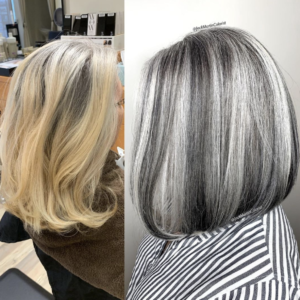
Based on her natural root pattern, Jack applied #mydentity @guy_tang Shadow Ash 6 Demi-Permanent + 10-volume developer in foils to create the dark lowlight in her hair to match the roots. He then applied #mydentity @guy_tang Shadow Ash 10 + #mydentity @guy_tang Permanent Silver Pearl 10SP + 10-volume developer to warm areas that are connected to the natural gray roots.
Toning
Silver and gray tones can be difficult to achieve, often pulling too blue or violet if they are not formulated carefully. That is why it is super important to remove as much pigment as possible through lightening before toning. Lena’s go-to silver toner is Redken Shades EQ 10T + 9B + 9V + Processing Solution for the perfect mix of warm and cool.
Pro Tip: When formulating for a silver-white tone, it actually helps to add a bit of warmth to control the ash and keep the hair from grabbing too blue or violet.
For the client that is naturally gray all over, maintenance is still important and required to keep the tone bright and icy. Brendnetta likes to use Matrix Colorsync Sheer Violet Acidic Toner with 10-volume developer as a protectant to keep her clients silver.

For tons of silver and gray formula ideas, click here!
Pricing
This process is very time consuming, and all of our experts charge by the hour to achieveI these looks. “I consider pricing for gray blending the same as a color correction which is an hourly charge,” says Lena.
“Depending on the thickness and hair texture I sometimes add a color cost depending on how much color is used,” says Sara.
3. The upkeep
In-salon maintenance for this transformation depends on the starting point for each client. Along with a serious at-home regimen, it is important to let your client’s know that in-salon toners may be required if color-depositing shampoos and conditioners are not enough.
“A bleach bath can also be done every one to two months if necessary but should be done on a case-by-case basis depending on the health of the hair,” says Jack.
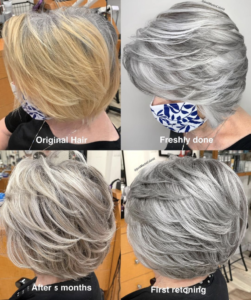
For more on how Jack Martin makes his toners last five months, click here!
4. The lifestyle
While the initial transformation is the bulk of this process, the upkeep is just as important. Talking through the at-home maintenance requirements not only allows your client to see that this will be a lifestyle change, but it also prepares them financially.
Products
Hydrating products are essential for clients who have embraced the gray, and color-depositing products can be useful, too.
“For home care, I strongly encourage a hydrating bonding shampoo and conditioner and I always send clients home with toning shampoo. I use Kevin Murphy Blonde Angel Wash because it deposits ash tones to lightened hair and controls unwanted yellow tones. A great hydrating purple shampoo is always a nice addition,” says Dominique.
Heat
Gray clients should stay away from heat as much as possible, including the temperature of the water. in their shower. If they must heat-style their hair, make sure your client knows how to do so safely.
Remind your client to always use a low-heat setting when they heat-style their hair with hair dryers, curling irons, and flat irons. If the curling iron or flat iron has an adjustable temperature range, use a heat setting between 300 °F (149 °C) and 350 °F (177 °C), or between 250 °F (121 °C) and 270 °F (132 °C) if their hair is especially fine.
Washing
Helping your client reduce the frequency of their hair washing schedule to once or twice a week will aid in color longevity and moisture preservation.
“Gray hair color fades faster than most, so the less often your client washes their hair, the longer the color will stay. If their hair is not very oily, recommend they wash it once per week. If their hair tends to get very oily, suggest washing it no more than twice per week. Dry shampoo is a great option in between washes to maintain oil and dirt,” says Jack.



